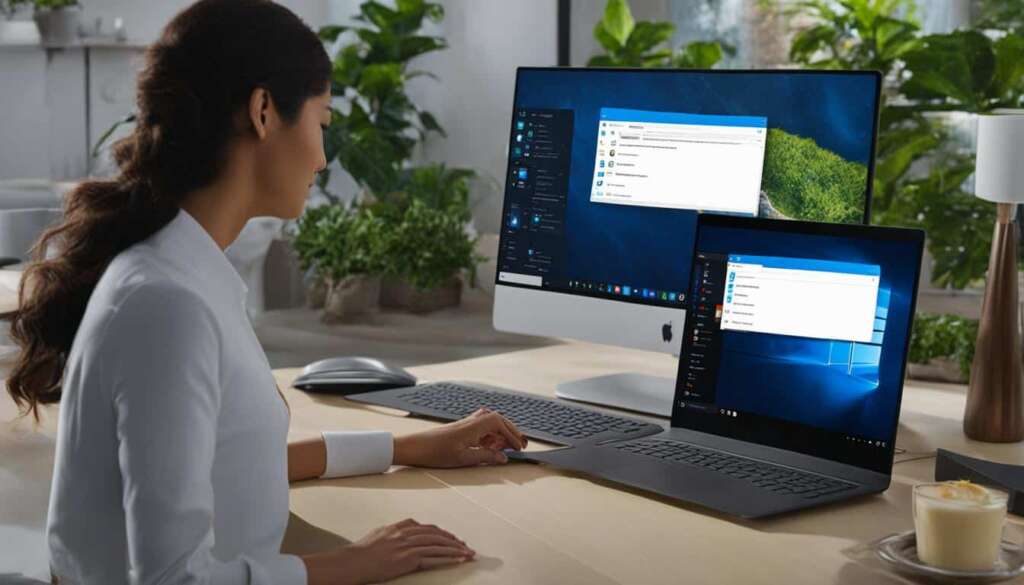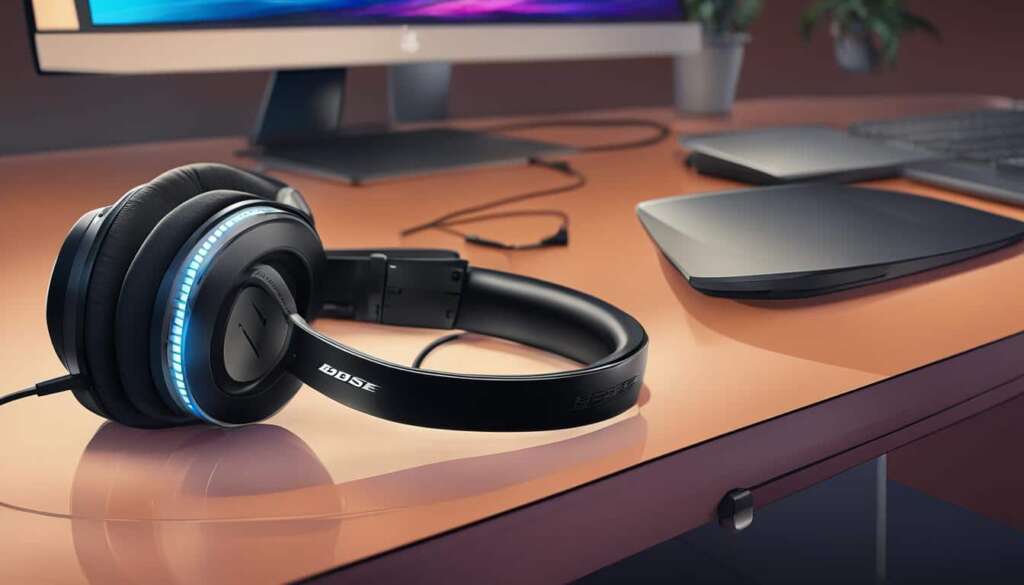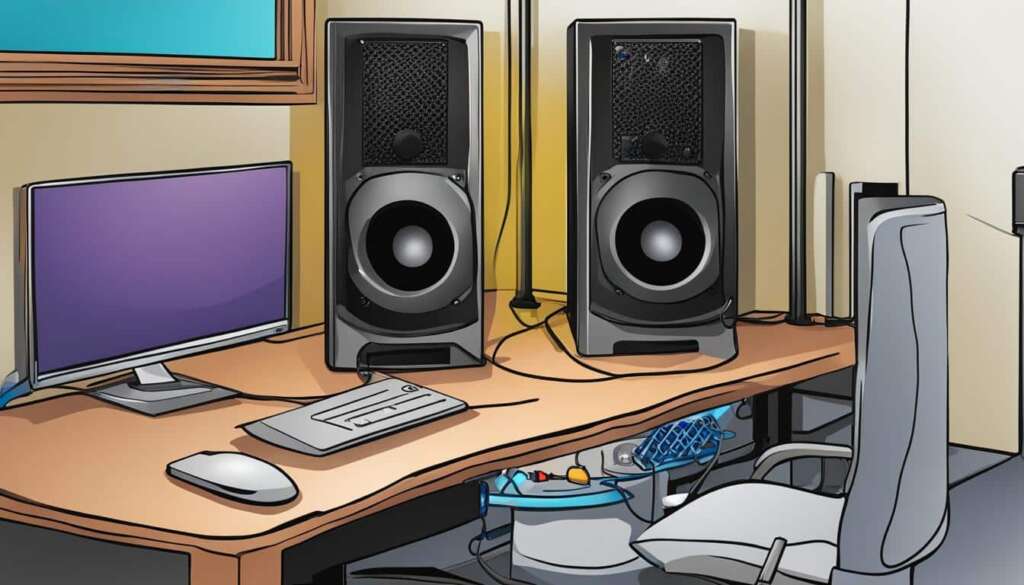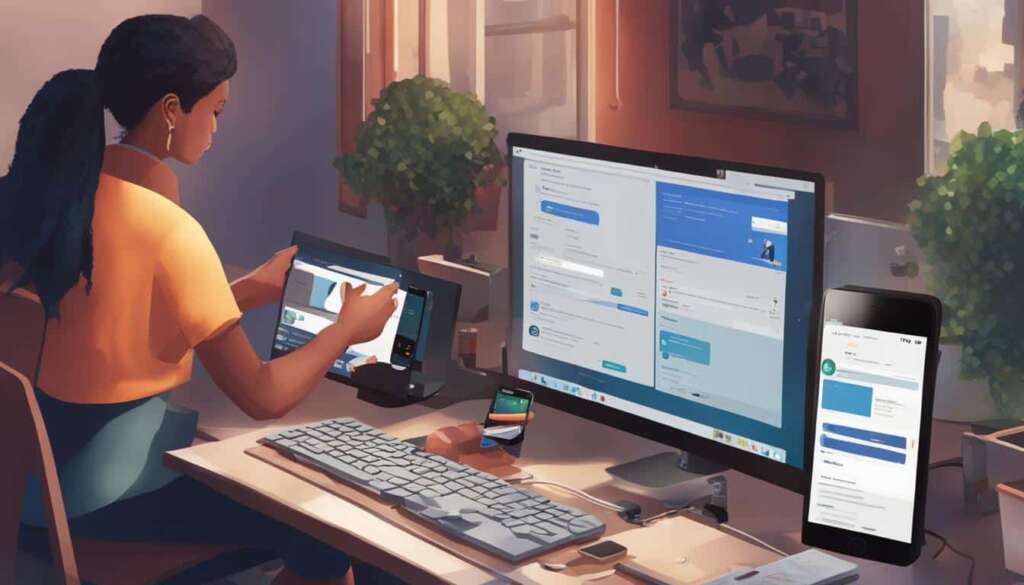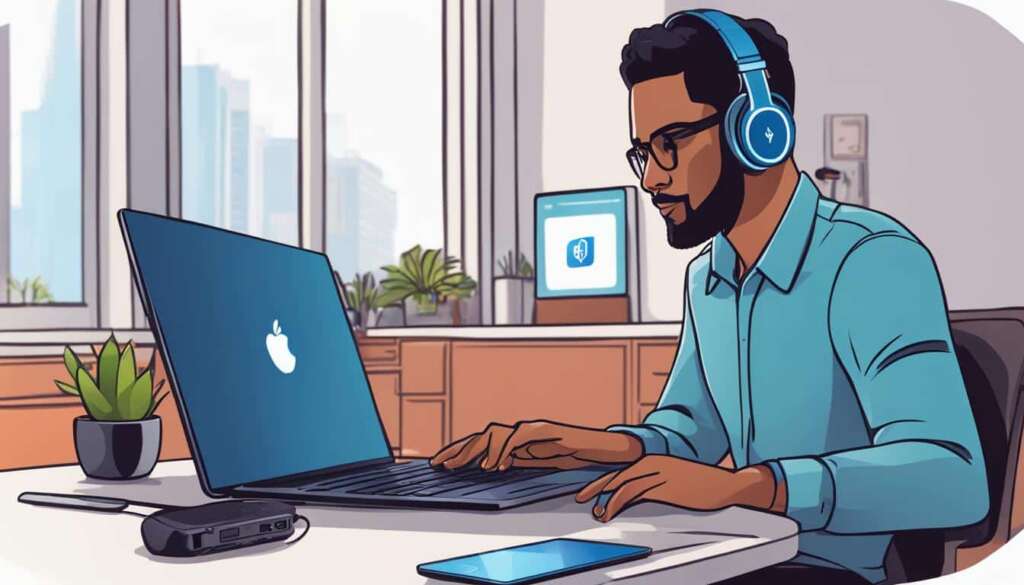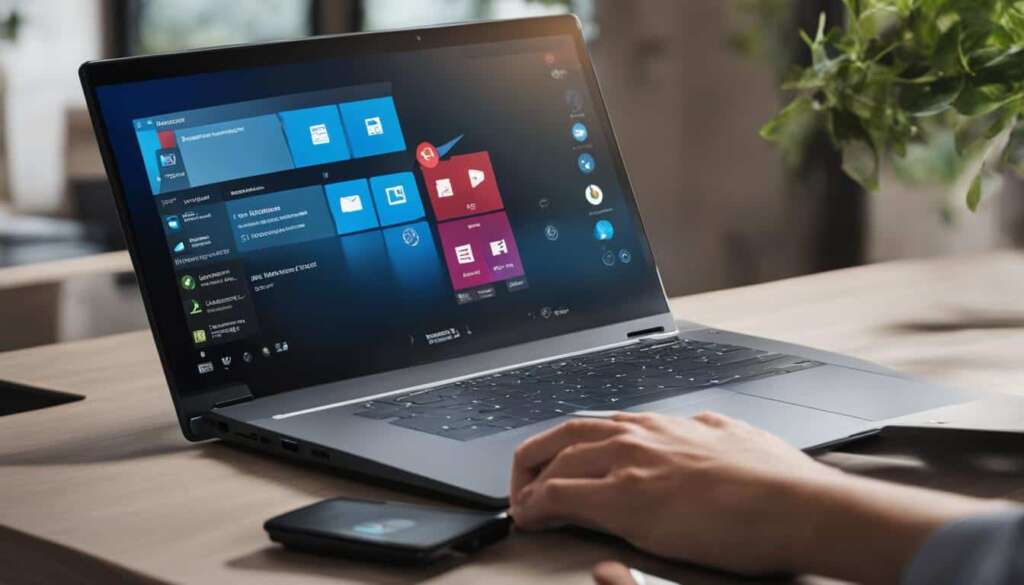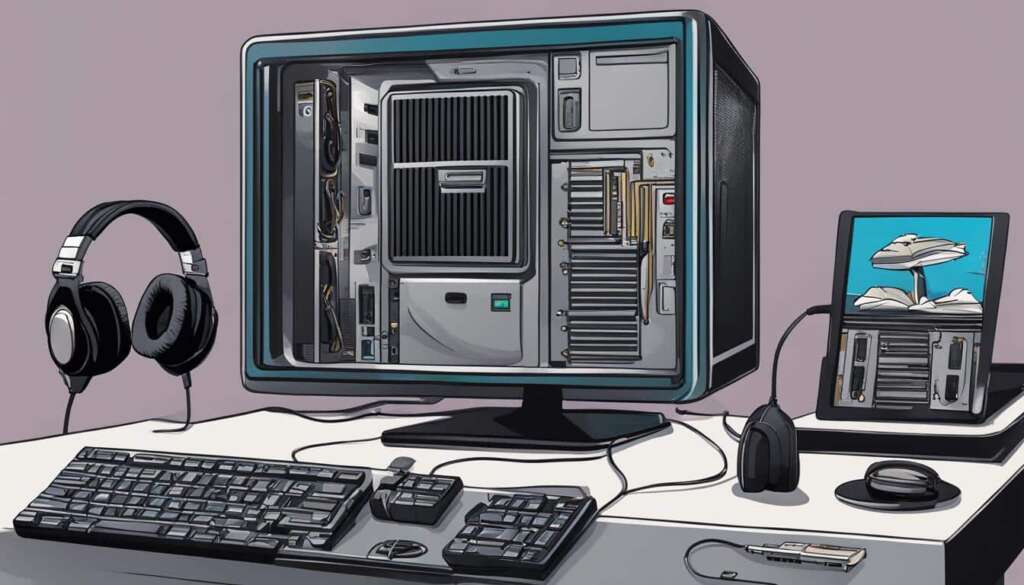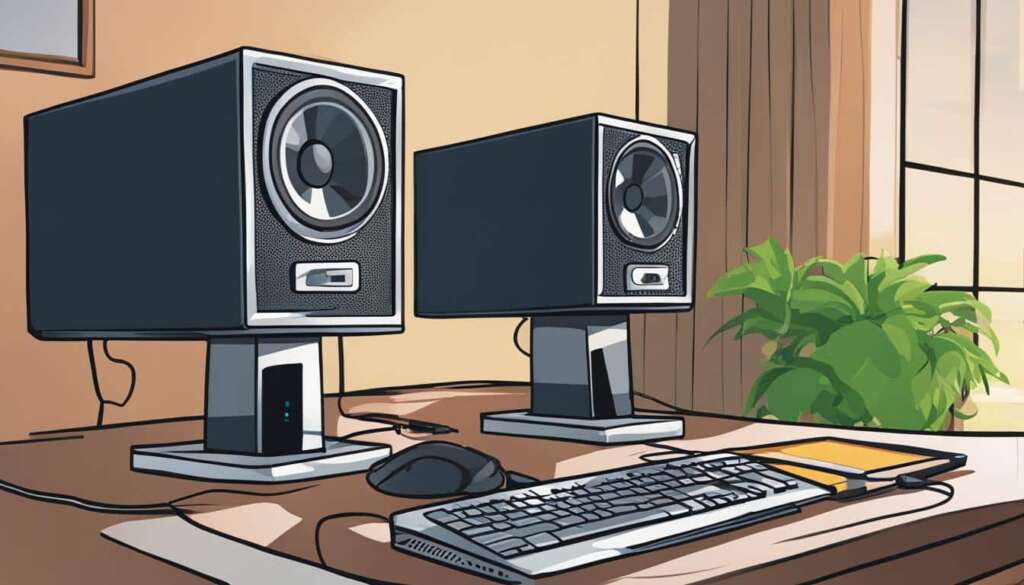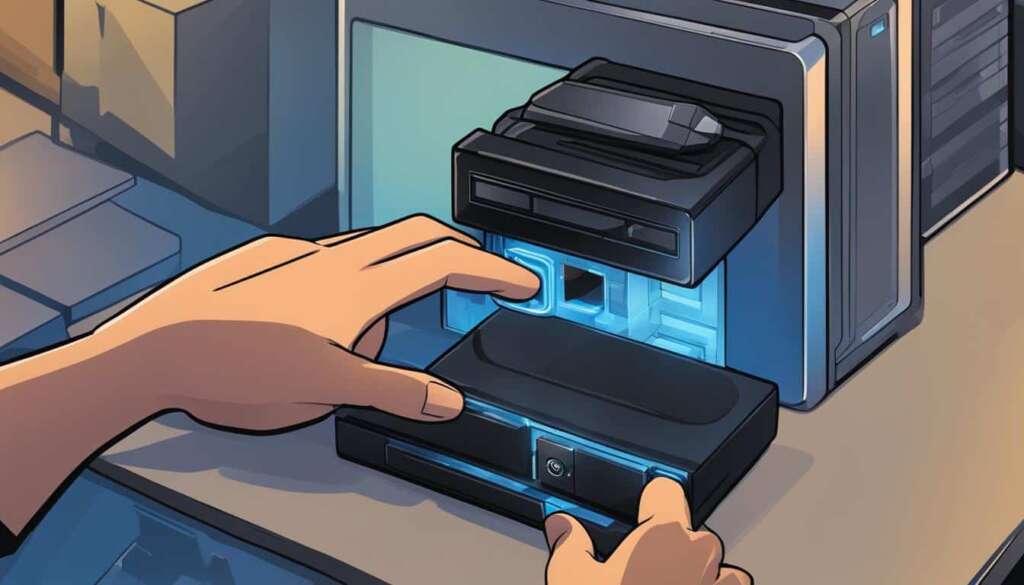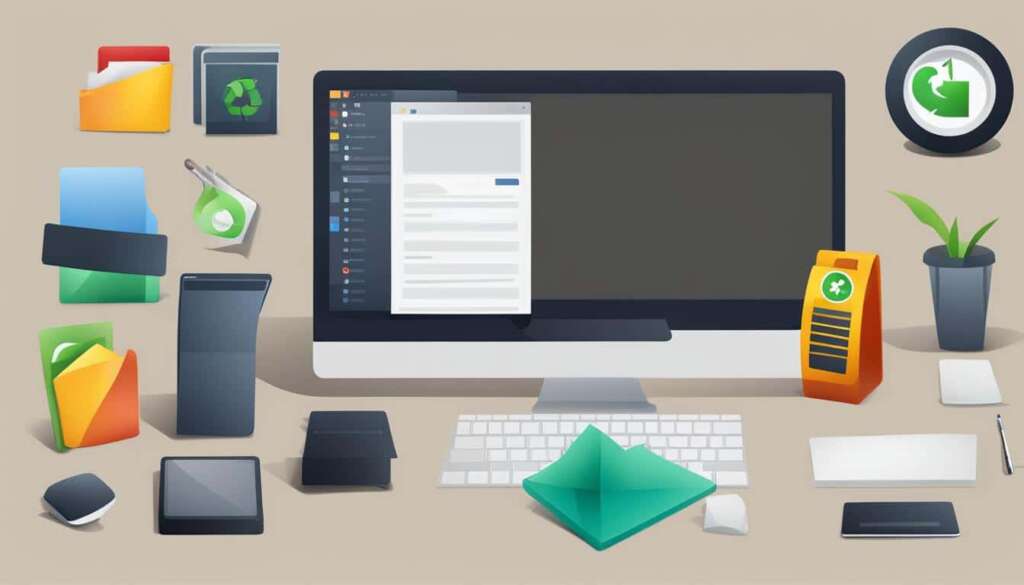Table of Contents
Welcome to our guide on how to turn on Bluetooth on your PC. Whether you’re using Windows 10 or Windows 11, activating Bluetooth is a straightforward process that allows you to connect various devices, such as headphones, speakers, or keyboards, wirelessly.
To turn on Bluetooth and connect a device on a Windows 10 computer, there are two main methods you can use. The first method is through the Action Center. Simply click on the speech bubble icon in the bottom-right corner of the screen to access the Action Center. From there, expand the menu and click on the Bluetooth tile to turn it on. Then, click on the Connect tile and select your device to connect it.
The second method to activate Bluetooth on Windows 10 is through the Windows settings. Open the Start menu, go to Settings, then Devices, and select Bluetooth & other devices. Toggle the slider next to Bluetooth to turn it on. Click on “Add Bluetooth or other devices” and select your device from the list to connect it.
If you’re using Windows 11, enabling Bluetooth is equally simple. Click on the area next to the clock on the taskbar, look for the Bluetooth toggle, and click on it to turn it on. Alternatively, you can right-click on the Bluetooth icon and go to Settings to manage and remove different devices. You can also search for “Bluetooth settings” in the Start menu to open the Bluetooth settings page.
Now that you know how to turn on Bluetooth on your PC, you can enjoy the convenience of wirelessly connecting your favorite devices. Stay tuned for the next sections of our guide, where we’ll cover troubleshooting Bluetooth connection issues and provide more tips for a seamless Bluetooth experience on your PC.
Turning on Bluetooth on Windows 10
Activating Bluetooth on your Windows 10 computer is a straightforward process. By following a few simple steps, you can easily enable Bluetooth and connect your devices.
To begin, open the Start menu and click on “Settings”. Alternatively, you can press the Windows key + I to access the Settings directly.
In the Settings menu, click on “Devices” to proceed to the next step.
Within the “Devices” menu, select “Bluetooth & other devices” to access the Bluetooth settings.
Once you’re on the Bluetooth settings page, you’ll see a toggle switch labeled “Bluetooth”. Simply click on the switch to turn Bluetooth on.
After turning Bluetooth on, you can proceed to connect your devices. Click on the “+ Add Bluetooth or other devices” button.
In the pop-up window, select “Bluetooth” as the device type.
Make sure your Bluetooth device is in pairing mode, as it needs to be discoverable by your computer. Follow the device-specific instructions for entering pairing mode if necessary.
Once your Bluetooth device is in pairing mode, it should appear in the list of available devices on the “Add a device” screen. Click on your device to select it.
Follow the on-screen instructions to complete the connection process. This may include confirming a passcode or PIN on both your computer and the Bluetooth device. Once the connection is established, you can start using your Bluetooth device with your Windows 10 computer.
By following these simple steps, you can easily turn on Bluetooth on your Windows 10 computer and enjoy the convenience of wireless connectivity. Remember to keep your devices within the appropriate range for a stable connection.
Troubleshooting Bluetooth Connection Issues
If you’re facing Bluetooth connection issues with your devices, there are several troubleshooting steps you can take to resolve the problem. Follow these suggestions to fix Bluetooth connection problems on your PC.
1. Ensure Pairing Mode and Proximity
If your Bluetooth device isn’t visible when attempting to connect, ensure that it is in pairing mode and within range of your computer. Some devices may require a specific button combination or menu setting to activate pairing mode. Refer to your device’s manual for instructions.
2. Explore Additional Devices
If you don’t see your Bluetooth device listed, access the Action Center window and click on “Find other types of devices.” You can also search for new devices in the Bluetooth settings. This expands the search range and increases your chances of detection.
3. Reset Bluetooth Device
Performing a reset on your Bluetooth device can help resolve connection issues. Consult the device’s manual for instructions on how to initiate a reset.
4. Update Bluetooth Driver
Outdated or incompatible Bluetooth drivers can contribute to connection problems. Visit the manufacturer’s website or use the Device Manager on your PC to check for driver updates. Download and install the latest drivers to ensure optimal compatibility.
5. Consider Legacy Systems
If you’re using an older version of Windows, such as Windows 7, the steps to enable and connect Bluetooth devices may differ. Refer to the appropriate documentation or support resources related to your specific operating system.
Illustration of a woman facing connection issues with her Bluetooth device, highlighting the frustration users may encounter.
| Problem | Solution |
|---|---|
| Bluetooth device not visible | Ensure pairing mode and proximity, explore additional devices |
| Intermittent connectivity | Reset Bluetooth device, update Bluetooth driver |
| Limited range or signal strength | Check proximity between devices, remove obstacles, update Bluetooth driver |
| Connection drops or disconnects | Reset Bluetooth device, update Bluetooth driver |
Table: Common Bluetooth connection problems and suggested solutions
Enabling Bluetooth on Windows 11
Activating Bluetooth on Windows 11 is a straightforward process. To get started, simply click on the area next to the clock on the taskbar. Look for the Bluetooth toggle icon, usually represented by a stylized Bluetooth symbol, and click on it to turn it on. It’s as simple as that!
If you prefer a different method, you can also right-click on the Bluetooth icon located on the taskbar and select “Settings.” This will open the Bluetooth settings window, where you can manage and remove various Bluetooth devices.
If accessing the Bluetooth settings through the taskbar seems a bit complicated, don’t worry. You can easily open the Bluetooth settings page by searching for “Bluetooth settings” in the Start menu. Once you’ve accessed the Bluetooth settings, you can enable Bluetooth by toggling the switch. From there, you can proceed to connect your Bluetooth devices, using the same steps as in Windows 10.
FAQ
How do I turn on Bluetooth on a Windows 10 computer?
There are two main methods to turn on Bluetooth on a Windows 10 computer. The first method is through the Action Center. To access the Action Center, click on the speech bubble icon in the bottom-right corner of the screen. Expand the menu and click on the Bluetooth tile to turn it on. Then, click on the Connect tile and select your device to connect it. The second method is through the Windows settings. Open the Start menu, go to Settings, then Devices, and select Bluetooth & other devices. Toggle the slider next to Bluetooth to turn it on. Click on Add Bluetooth or other devices and select your device from the list to connect it.
How do I connect a device to Bluetooth on a Windows 10 computer?
To connect a device to Bluetooth on a Windows 10 computer, open the Start menu, go to Settings, then Devices, and select Bluetooth & other devices. Toggle the slider next to Bluetooth to turn it on. Click on Add Bluetooth or other devices and select your device from the list. Make sure your Bluetooth device is in pairing mode, and then follow the on-screen instructions to complete the connection.
What can I do if I’m having trouble connecting my Bluetooth device to Windows 10?
If you’re having trouble connecting your Bluetooth device, there are a few troubleshooting steps you can try. First, make sure that your device is in pairing mode and within range of your computer. If you don’t see your Bluetooth device listed, click on Find other types of devices at the bottom of the Action Center window or search for new devices in the Bluetooth settings. If you’re still experiencing issues, you can try resetting your Bluetooth device or updating the Bluetooth driver on your computer. Additionally, if you’re using an older version of Windows, such as Windows 7, you may need to follow different steps to turn on and connect Bluetooth devices.
How do I enable Bluetooth on Windows 11?
In Windows 11, enabling Bluetooth is a simple process. Click on the area next to the clock on the taskbar, look for the Bluetooth toggle, and click on it to turn it on. You can also right-click on the Bluetooth icon and go to Settings to manage and remove different devices. If accessing the Bluetooth settings through the taskbar is too complicated, you can search for “Bluetooth settings” in the Start menu to open the Bluetooth settings page. Once Bluetooth is enabled, you can connect your Bluetooth device by following the same steps as in Windows 10.

